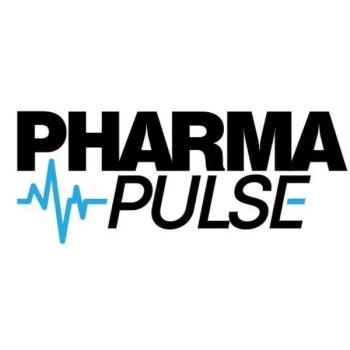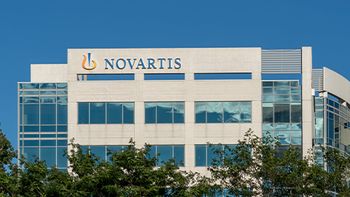
- Pharmaceutical Commerce - March/April 2014
Six factors driving new specialty pharmacies
What you need to know about the current specialty pharmacy landscape
Specialty drugs will account for 50% of total US drug spending within five years. The projected growth is drawing many companies into the business of dispensing specialty drugs. The new entrants will increase competition and challenge manufacturers’ channel strategies.
Here are six key factors driving this growth:
1. Smaller PBMs are opening specialty pharmacies. Following the lead of the largest Pharmacy Benefit Managers (PBMs), smaller PBMs have begun operating their own internal specialty pharmacies. Examples include Prime Therapeutics (Prime Specialty Pharmacy) and Catamaran (BriovaRx). Both pharmacies were launched in 2012.
2. Private, independent specialty pharmacies are growing quickly. There are 12 independent specialty pharmacies on the 2013 Inc. magazine list of the fastest-growing private companies in the US. Average revenue for these 12 pharmacies was $197.6 million, and the median 3-year revenue growth rate was 167%. All but three of these companies were founded within the past 15 years.
3. Accreditation is lowering barriers to entry. Independent accreditation organizations help community pharmacies develop and verify their capabilities to manufacturers and third-party payers. Accreditation thereby creates a pathway by which any pharmacy can build specialty pharmacy capabilities. As of December 2013, a Drug Channels Institute analysis shows 59 companies with 114 specialty pharmacy locations that had achieved “Full Accreditation” under URAC’s Specialty Pharmacy Accreditation. An additional 51 companies are “In Process” and are likely to be accredited shortly.
4. Hospital systems are seeking specialty pharmacy revenues. Some integrated delivery networks (IDNs) and health systems are developing their own specialty pharmacies, such as the Fairview Specialty Pharmacy (part of Minnesota’s Fairview Health System) and Commcare (a specialty pharmacy owned by hospital group purchasing organization Premier). Fairview Specialty Pharmacy has $360 million in revenues. Seven academic medical centers formed the for-profit Excelera network, which aims to “mitigate the ‘leakage’ of patients to for-profit specialty pharmacy companies.” Many of these medical centers will acquire specialty drugs under the 340B drug discount program, generating substantial profits for the hospitals.
5. Physician practices are establishing specialty pharmacies. The growth in oral oncology products is encouraging physicians to dispense these products from offices and clinics. These practice-affiliated pharmacies act as a “closed door” pharmacy by dispensing only to the practice’s patients. In-office dispensing gives the physician more control over treatment while creating an additional revenue source for the practice. Although one-fourth of practices operate an affiliated pharmacy, only 5% of oral oncology volume is dispensed from a provider’s office. RainTree Oncology Services has announced that its physician practices members will become part of Express Scripts’ pharmacy network. The physician offices are now “specialty network” pharmacies for Express Scripts’ plan sponsor clients.
6. Retail pharmacies are leveraging open government payer networks. Some entrepreneurial independent-pharmacy owners are focusing on patients who take specialty drugs and rely on Medicare Part D or Medicaid, which pay for about one-third of specialty drugs. The law governing the Medicare drug benefit contains an “Any Willing Provider” provision that can be interpreted as requiring that these pharmacies be admitted into the specialty network of a Medicare Part D Prescription Drug Plan (PDP).
Despite new entry, market share for dispensing specialty drugs remains highly concentrated—for now. Drug Channels Institute estimates that the top three companies—Express Scripts, CVS Caremark, and Walgreens—accounted for 63% of revenues from pharmacy-dispensed specialty drugs. The next three largest players had a combined share of about 5%.
The specialty industry is becoming much more competitive, which will compress margins for undifferentiated specialty pharmacies. Manufacturers will face enormous pressure to broaden limited distribution networks and provide additional financial support. Manufacturers will also need to manage specialty pharmacies owned by pharmacy benefit managers, retail drugstore chains, health plans, pharmaceutical wholesalers, physician practices, and hospital systems.
ABOUT THE AUTHOR
Dr. Fein is president of Pembroke Consulting, Inc., and CEO of Drug Channels Institute. This article is adapted from his new 2013—14 Economic Report on Retail, Mail, and Specialty Pharmacies, which is available at
Articles in this issue
almost 12 years ago
The pharma rep profession will be immortalalmost 12 years ago
Common misconceptions about the orphan drug designationalmost 12 years ago
AbbVie enters Asian manufacturing with a $320-million site in Singaporealmost 12 years ago
So you are 'in the cloud;' now what?almost 12 years ago
Network effect of industry-crowdsourced physician dataalmost 12 years ago
Make your CRM vendor a true partner to your sales teamalmost 12 years ago
New adverse-events reporting service speeds results to payersalmost 12 years ago
Acquisitions realign UK logistics services, cold chain packagingalmost 12 years ago
After a relatively flat year, 2014 could be big for pharma M&Aalmost 12 years ago
IMS Institute assesses social media for industry significanceNewsletter
Stay ahead in the life sciences industry with Pharmaceutical Commerce, the latest news, trends, and strategies in drug distribution, commercialization, and market access.




